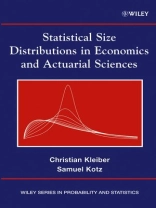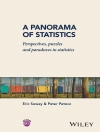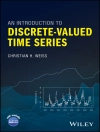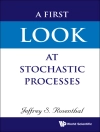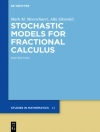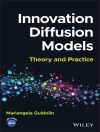A comprehensive account of economic size distributions around the
world and throughout the years
In the course of the past 100 years, economists and applied
statisticians have developed a remarkably diverse variety of income
distribution models, yet no single resource convincingly accounts
for all of these models, analyzing their strengths and weaknesses,
similarities and differences. Statistical Size Distributions in
Economics and Actuarial Sciences is the first collection to
systematically investigate a wide variety of parametric models that
deal with income, wealth, and related notions.
Christian Kleiber and Samuel Kotz survey, compliment, compare,
and unify all of the disparate models of income distribution,
highlighting at times a lack of coordination between them that can
result in unnecessary duplication. Considering models from eight
languages and all continents, the authors discuss the social and
economic implications of each as well as distributions of size of
loss in actuarial applications. Specific models covered
include:
* Pareto distributions
* Lognormal distributions
* Gamma-type size distributions
* Beta-type size distributions
* Miscellaneous size distributions
Three appendices provide brief biographies of some of the
leading players along with the basic properties of each of the
distributions. Actuaries, economists, market researchers, social
scientists, and physicists interested in econophysics will find
Statistical Size Distributions in Economics and Actuarial Sciences
to be a truly one-of-a-kind addition to the professional
literature.
Tabela de Conteúdo
Preface.
Acknowledgments.
1. Introduction.
1.1 Our Aims.
1.2 Types of Economic Size Distributions.
1.3 A Brief Historical Sketch of the Models for Studying
Economic Size Distributions.
1.4 Stochastic Process Models for Size Distributions.
2. General Principles.
2.1 Some Concepts from Economics.
2.2 Hazard Rates, Mean Excess Functions, and Tailweight.
2.3 Systems of Distributions.
2.4 Generating Systems of Income Distributions.
3. Pareto Distributions.
3.1 Definitions.
3.2 History and Genesis.
3.3 Moments and Other Basic Properties.
3.4 Characterizations.
3.5 Lorenz Curve and Inequality Measures.
3.6 Estimation.
3.7 Empirical Results.
3.8 Stoppa Distributions.
3.9 Conic Distribution.
3.10 A ‘log-adjusted’ Pareto Distribution.
3.11 Stable Distributions.
3.12 Further Pareto-type Distributions.
4. Lognormal Distribution.
4.1 Definition.
4.2 History and Genesis.
4.3 Moments and Other Basic Properties.
4.4 Characterizations.
4.5 Lorenz Curve and Inequality Measures.
4.6 Estimation.
4.7 Three-and four-parameter Lognormal Distributions.
4.8 Multivariate Lognormal Distribution.
4.9 Empirical Results.
4.10 Generalized Lognormal Distribution.
4.11 An Asymmetric Log-Laplace Distribution.
4.12 Related Distributions.
5. Gamma-type Size Distributions.
5.1 Generalized Gamma Distribution.
5.2 Gamma Distribution.
5.3 Log-gamma Distribution.
5.4 Inverse Gamma (Vinci) Distribution.
5.5 Weibull Distribution.
5.6 Log-Gompertz Distribution.
6. Beta-type Size Distributions.
6.1 (Generalized) Beta Distribution of the Second Kind.
6.2 Singh-Maddala Distribution.
6.3 Dagum Distribution.
6.4 Fisk (log-logistic) and Lomax Distributions.
6.5 (Generalized) Beta Distribution of the First Kind.
7. Miscellaneous Size Distributions.
7.1 Benini Distribution.
7.2 Davis Distribution.
7.3 Champernowne Distribution.
7.4 Benktander Distributions.
Appendix A. Biographies.
A.1 Vilfredo Federico Domaso Pareto, Marchese di Parigi.
A.2 Rodolfo Benini.
A.3 Max Otto Lorenz.
A.4 Corrado Gini.
A.5 Luigi Amoroso.
A.6 Raffaele D’Addario.
A.7 Robert Pierre Louis Gibrat.
A.8 David Gawen Champernowne.
Appendix B. Data on Size Distributions.
Appendix C. Size Distributions.
List of Symbols.
References.
Author Index.
Subject Index.
Sobre o autor
CHRISTIAN KLEIBER, Ph D, is assistant professor in the
Department of Statistics at the University of Dortmund in Germany.
SAMUEL KOTZ, Ph D, honorary Doctor of Science, is
professor and research scholar at the Department of Engineering
Management and Systems Engineering at George Washington University
in Washington, D.C.
